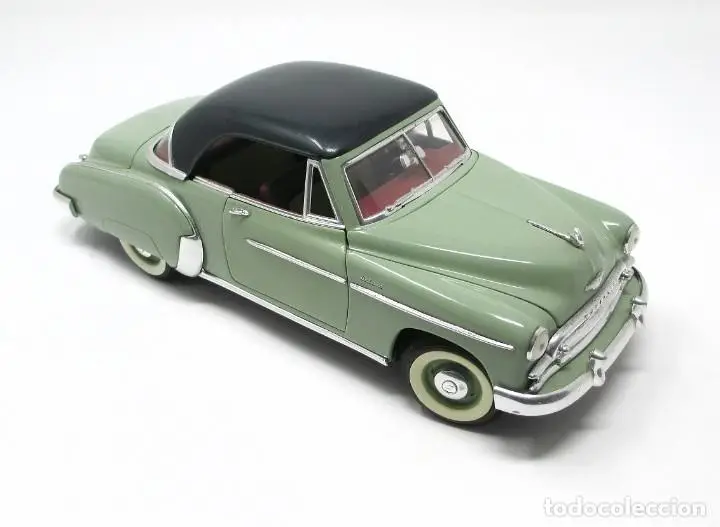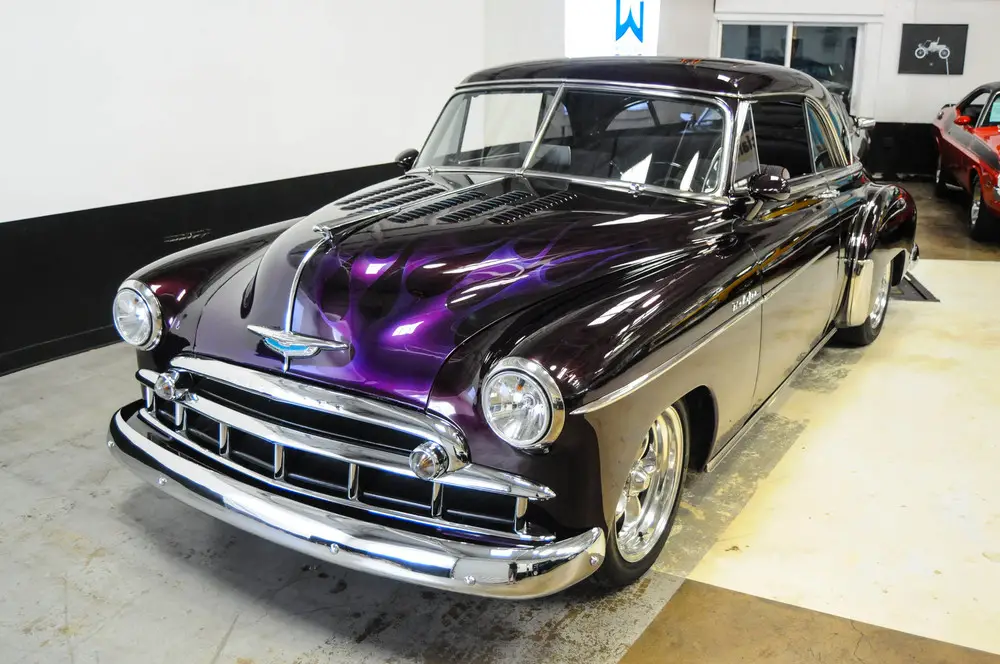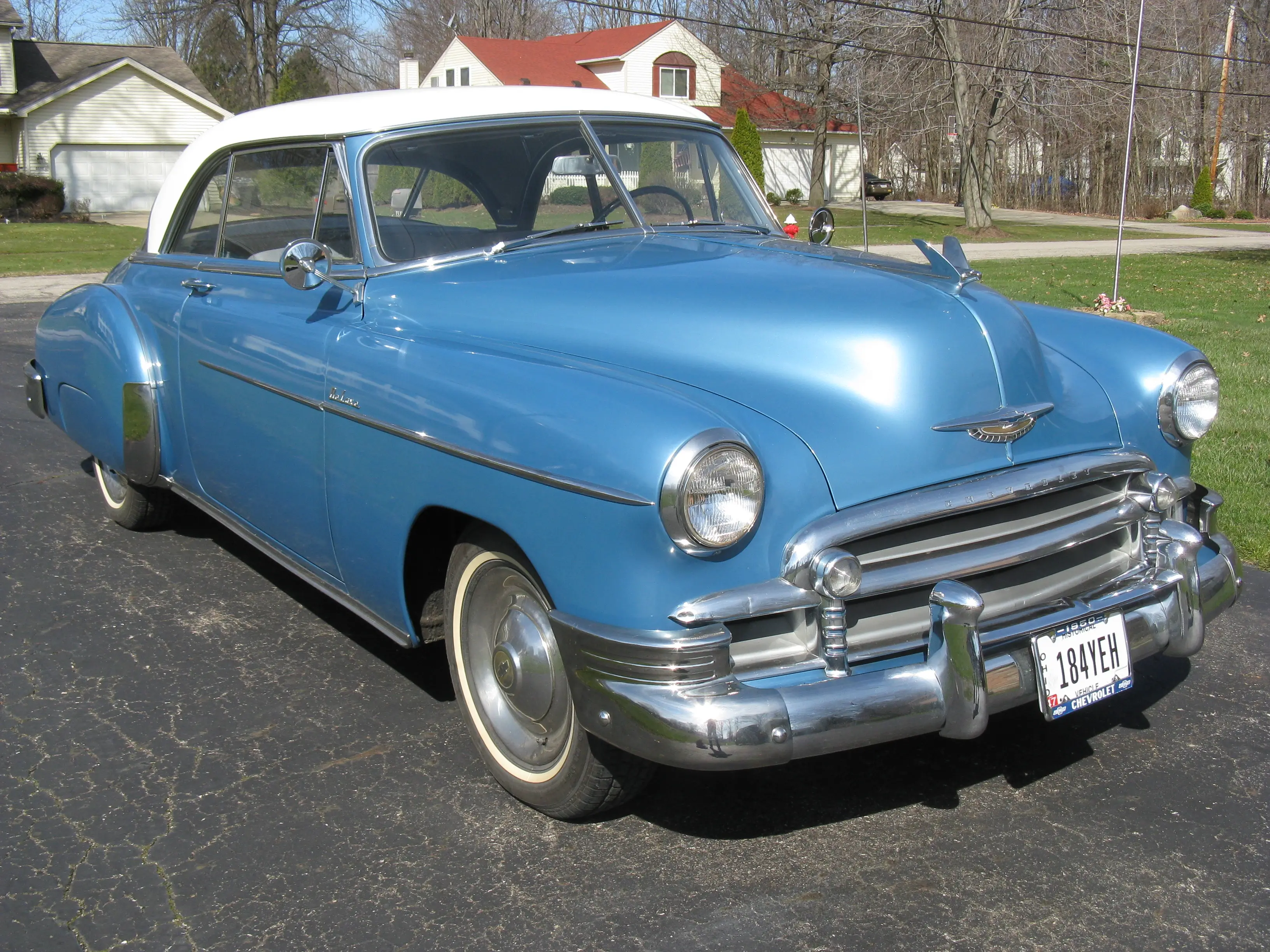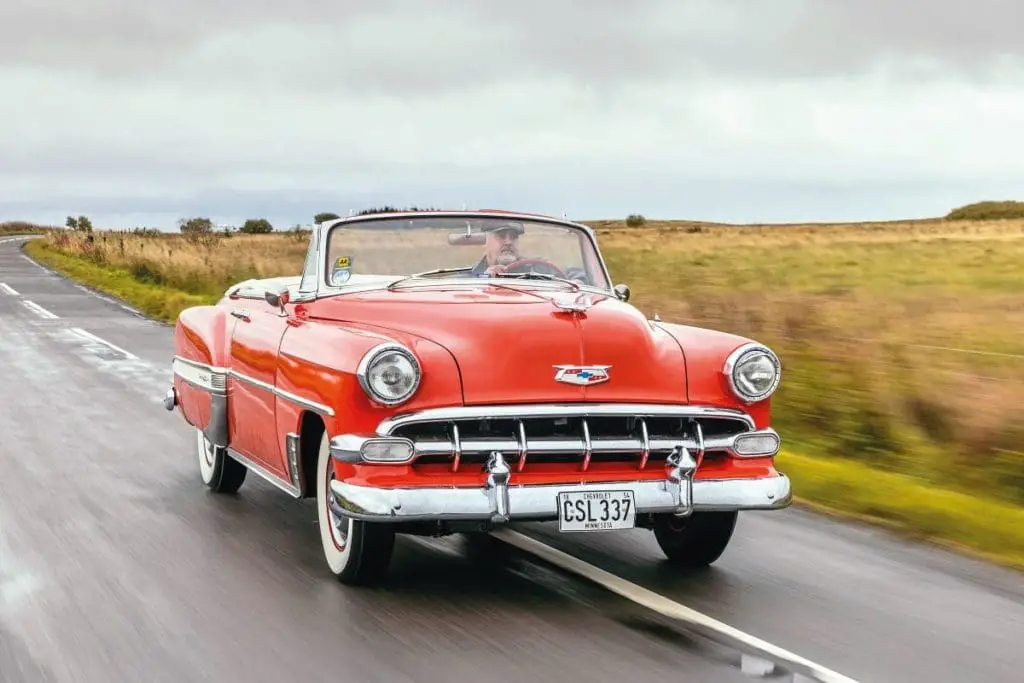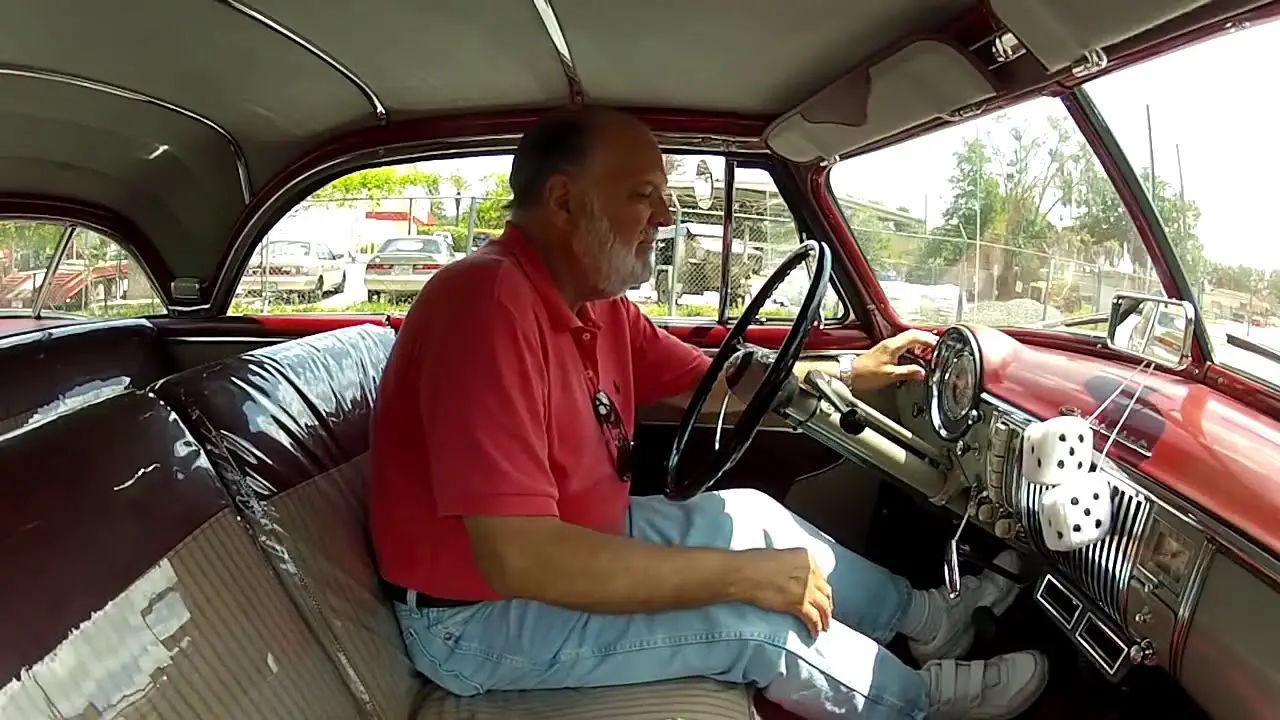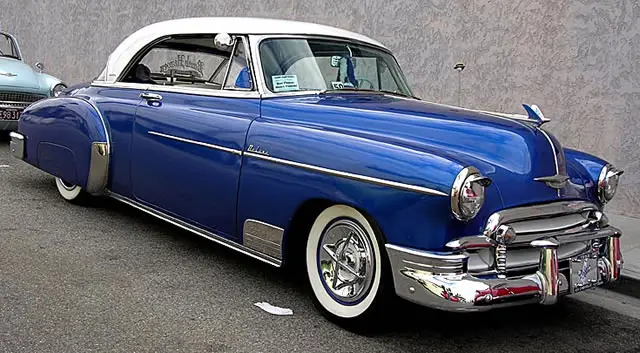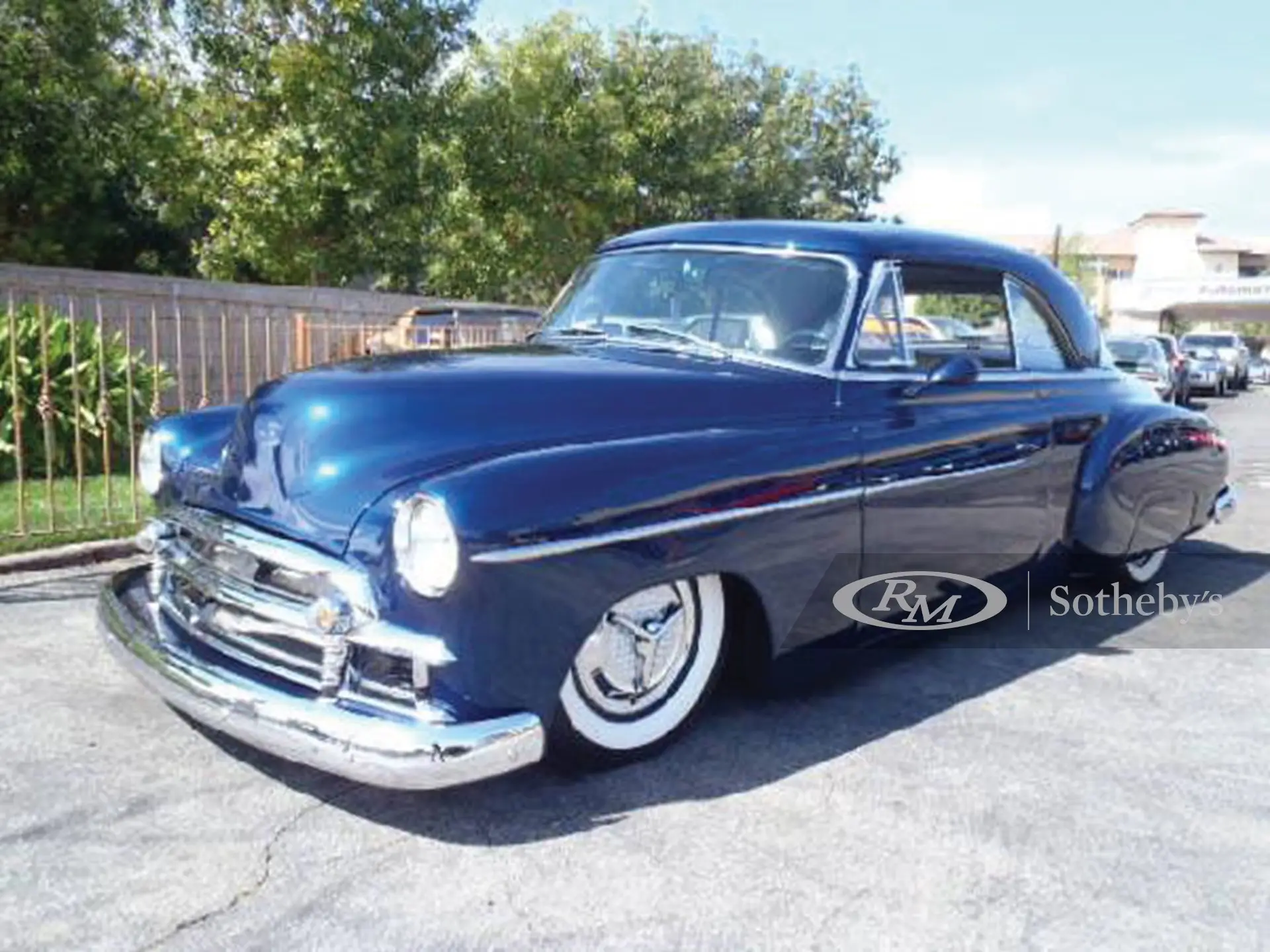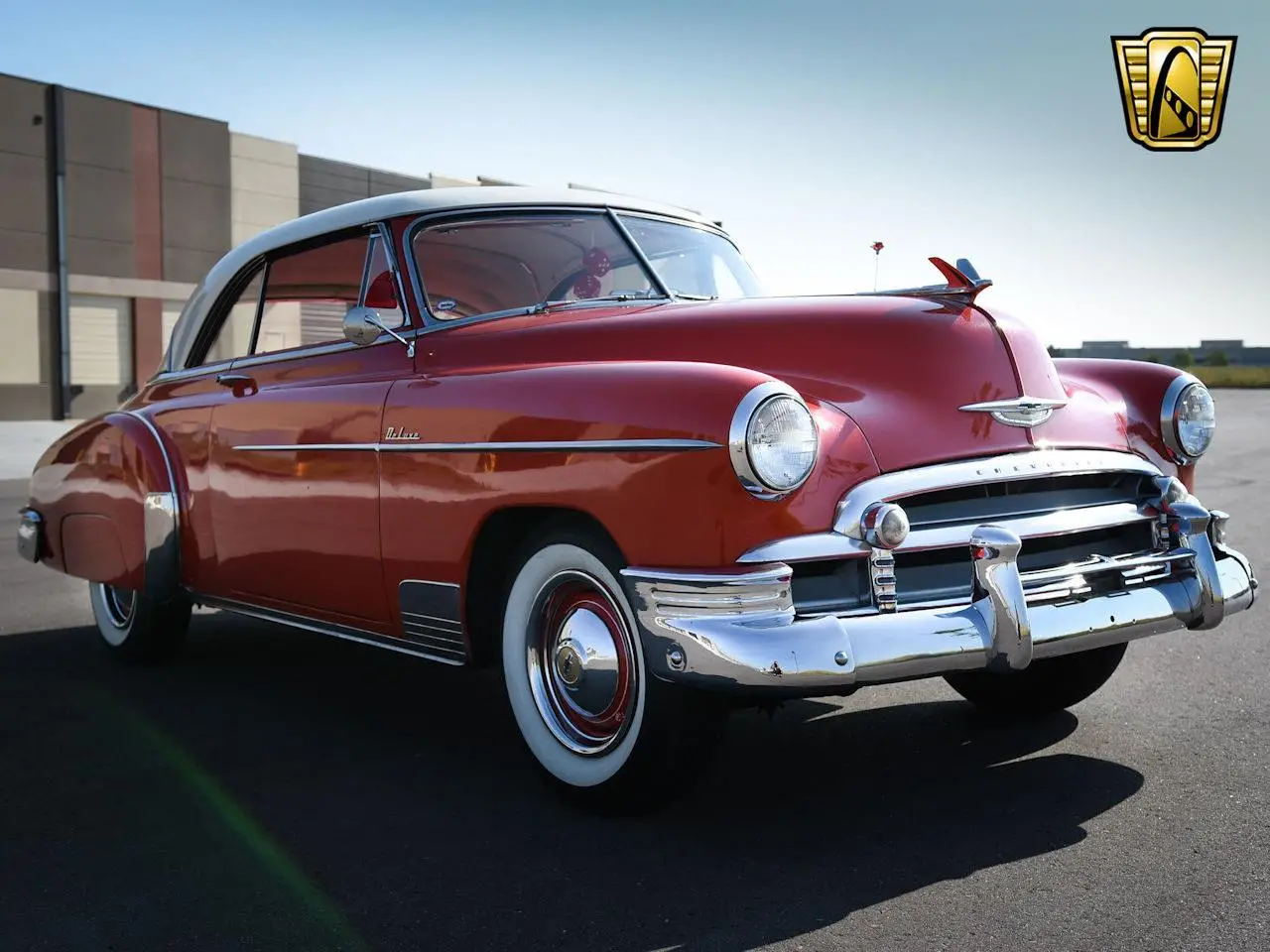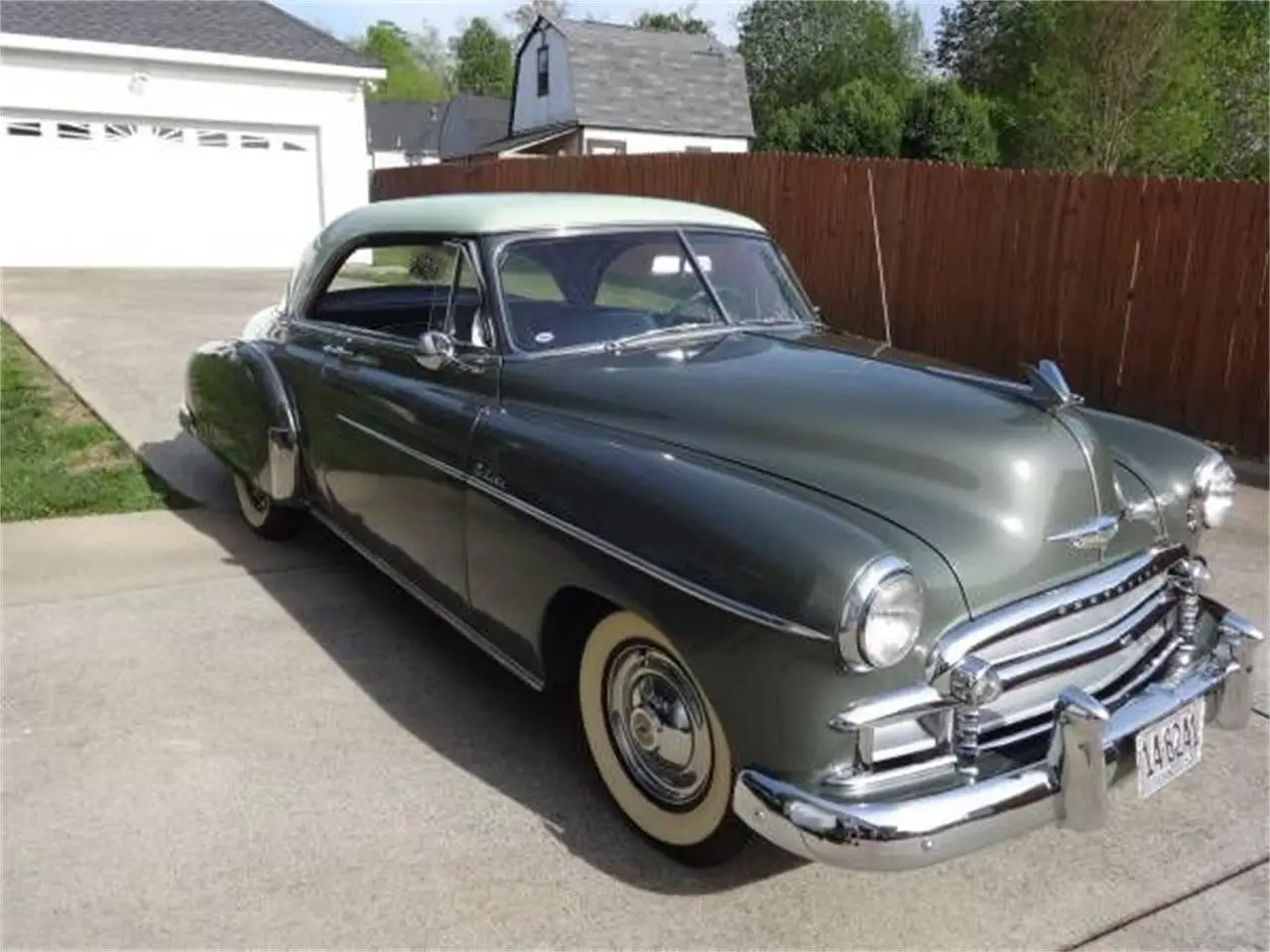The Classic Beauty of a 1950 Chevy Bel Air
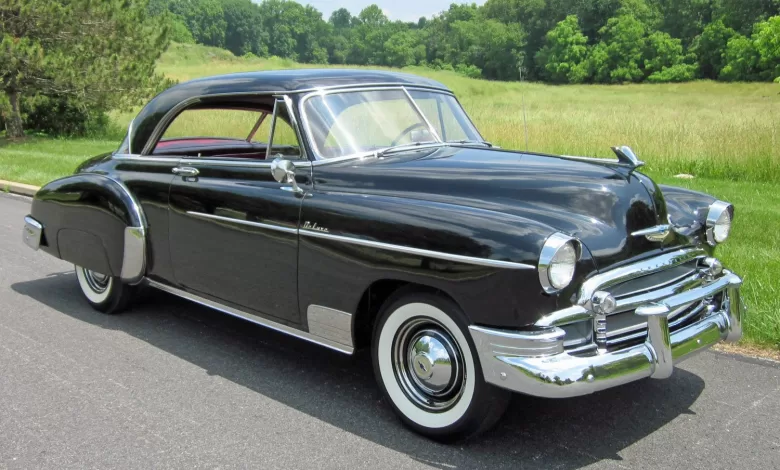
In the realm of classic American automobiles, few names evoke the same sense of nostalgia and admiration as the 1950 Chevrolet Bel Air. This iconic car, born out of the post-war boom and the burgeoning middle class, embodied the spirit of the era with its sleek design, powerful engines, and luxurious appointments.
History of the 1950 Chevy Bel Air
Origins: A Star is Born
The Bel Air’s story began in 1950, when Chevrolet introduced a new two-door hardtop model in its Deluxe Styleline series. This stylish variant, initially named the Bel Air Sport Coupe, stood out from its siblings with its distinctive rear-end styling, featuring a wide chrome strip and prominent Bel Air script.
1953-1957: The Golden Years
The true transformation of the Bel Air came in 1953 when Chevrolet revamped its lineup, elevating the Bel Air name from a body style designation to a premium trim level. This marked the beginning of the Bel Air’s golden years, a period characterized by groundbreaking design, powerful performance, and enduring popularity.
Design Evolution: A Symbol of Style
The 1953 Bel Air marked a turning point in automotive design, embracing a new era of sophistication and elegance. Its sleek lines, sweeping curves, and two-tone paint schemes became synonymous with 1950s style. The Bel Air’s design continued to evolve over the years, becoming bolder and more muscular with each iteration.
Performance Prowess: Power Meets Style
The Bel Air wasn’t just about looks; it also packed a punch under the hood. Chevrolet offered a range of powerful engines, including the legendary “Stovebolt” inline-six and the iconic small-block V8. These engines provided ample power for spirited driving, making the Bel Air a popular choice for hot rod enthusiasts and drag racers alike.
Cultural Icon: A Symbol of an Era
The 1950 Chevy Bel Air transcended its role as a mere automobile, becoming a symbol of the American Dream and an enduring icon of popular culture. Its presence was felt in countless movies, television shows, and music videos, cementing its place as a symbol of the 1950s.
Legacy and Enduring Appeal
Today, the 1950 Chevy Bel Air remains one of the most sought-after classic cars, prized for its timeless design, powerful performance, and rich cultural significance. Classic car enthusiasts and collectors worldwide continue to cherish the Bel Air, a testament to its enduring appeal and the legacy of automotive excellence it represents.
Exploring the Iconic American Graffiti Cars A Nostalgic Ride Through Time
Innovations in Design and Technology
In addition to its stylish appearance, the 1950 Chevy Bel Air boasted some innovative features that set it apart from other cars of its time. These included an improved suspension system, a wider track for better stability, and a fully synchronized manual transmission. It also had a larger trunk compared to other models in its class, making it a practical choice for families.
However, it was the Chevy Bel Air’s iconic design that truly captured the attention of car enthusiasts. Its sleek lines, chrome accents, and two-tone paint options made it a standout on the roads. The car’s popular “hardtop” style, with its pillarless design and wrap-around rear window, was also a major selling point.
1953 Chevy Bel Air A Classic American Beauty
Features and Specifications of the 1950 Chevy Bel Air
The 1950 Chevy Bel Air came with various standard and optional features that added to its appeal. Here are some of the notable features and specifications of this classic car:
Engine Options
- 3.5L inline-six engine with 92 horsepower
- 3.9L inline-six engine with 105 horsepower (optional)
- 3-speed manual transmission (standard) or 2-speed automatic Powerglide transmission (optional)
Interior Features
- Bench seating for six passengers
- Optional AM radio and clock
- Optional heater and defroster
- Optional power windows and seats
Exterior Features
- Two-tone paint options available
- Chrome trimmings on the grille, side moldings, and fender skirts
- “Bel Air” script on front fenders
- Wrap-around rear window on hardtop models
Dimensions
- Wheelbase: 115 inches
- Length: 197 inches
- Width: 74 inches
- Height: 64 inches
Design and Styling of the 1950 Chevy Bel Air
The design of the 1950 Chevy Bel Air was heavily influenced by the Art Deco movement of the 1920s and 1930s, characterized by bold geometric shapes and streamlined designs. This can be seen in the car’s distinctive rounded fenders, curved roofline, and chrome accents.
One of the most notable design elements of the 1950 Chevy Bel Air is its iconic two-tone paint scheme. This was a trend that started in the late 1940s and continued into the 1950s, with many car manufacturers offering two-tone options for their models. The Chevy Bel Air had a wide range of color combinations to choose from, such as blue over white, green over ivory, and gray over black.
The interior of the 1950 Chevy Bel Air also exuded luxury and style. The dashboard featured a sleek and modern design, while the seats were upholstered in high-quality materials such as leather and vinyl. The car offered plenty of legroom and headroom, making it a comfortable ride for both the driver and passengers.
Performance and Engine Options for the 1950 Chevy Bel Air
The 1950 Chevy Bel Air was equipped with a choice of two inline-six engines – the standard 3.5L engine and an optional 3.9L engine. While these may seem small by today’s standards, they were considered powerful for cars of that era. The 3.9L engine, in particular, delivered a smooth and responsive performance, which made the car popular among those who wanted a bit more power.
One of the key features that contributed to the Chevy Bel Air’s impressive performance was its improved suspension system. It used tubular shock absorbers instead of traditional lever shocks, resulting in a smoother ride and better handling. The wider track of the car also aided in stability and cornering ability.
Additionally, the 1950 Chevy Bel Air was one of the first cars to offer a fully synchronized manual transmission, which made gear shifting easier and smoother. The optional Powerglide automatic transmission was also a popular choice, especially for those who preferred a more relaxed driving experience.
Exploring the Iconic American Graffiti Cars A Nostalgic Ride Through Timeels and Variants of the 1950 Chevy Bel Air
The 1950 Chevy Bel Air was available in three body styles: club coupe, sport coupe, and convertible. However, there were also a few special models and variants that were released during its production run.
Nomad Wagon
The Chevy Nomad was introduced in 1955 as a two-door station wagon version of the Bel Air. It featured a unique curved rear roof design and came standard with the 4.3L V8 engine. The Nomad Wagon was marketed as a sportier and more upscale version of the Bel Air and quickly gained popularity among car buyers.
Hardtop Convertible
In 1956, a hardtop convertible model of the Bel Air was released. This model featured a power-operated folding top that could be stowed behind the rear seat, creating a clean and seamless look. The hardtop convertible was highly sought after by car enthusiasts and is now considered one of the most valuable models of the 1950 Chevy Bel Air.
Hot Rods and Custom Builds
The 1950 Chevy Bel Air has also become a popular choice for hot rod and custom builds. Its classic design and availability of interchangeable parts make it a favorite among car hobbyists. Many owners have modified their Bel Airs to enhance performance or add personalized touches, making each one unique.
Collectibility and Value of the 1950 Chevy Bel Air
The 1950 Chevy Bel Air’s timeless design, innovative features, and impressive performance have cemented its place as a collectible car. Today, it is highly valued and sought after by collectors and enthusiasts alike. The value of a 1950 Chevy Bel Air can vary depending on factors such as condition, mileage, and rarity.
According to Hagerty, a leading insurance provider for classic and collector cars, the average value of a 1950 Chevy Bel Air in good condition is around $25,000. However, rare and well-maintained models can fetch much higher prices, with some selling for over $100,000.
Maintenance and Restoration Tips for the 1950 Chevy Bel Air
If you are lucky enough to own a 1950 Chevy Bel Air, it is essential to properly maintain and care for it to preserve its value and ensure its longevity. Regular maintenance such as oil changes, tune-ups, and brake inspections are crucial in keeping the car running smoothly.
Restoration projects for the 1950 Chevy Bel Air are also popular among car enthusiasts. However, it is important to note that restoring a classic car can be a time-consuming and expensive process. It is recommended to consult with an experienced mechanic or join a restoration club for advice and assistance in restoring your Bel Air.
Notable Events and Milestones for the 1950 Chevy Bel Air
Over the years, the 1950 Chevy Bel Air has been featured in various events and milestones, solidifying its place in automotive history. Here are some notable moments for this iconic car:
- In 1999, a 1950 Chevy Bel Air was inducted into the National Historic Vehicle Register by the Historic Vehicle Association.
- The car was also featured in the movie “American Graffiti” in 1973, further cementing its popularity among car enthusiasts.
- In 2002, General Motors released a modern version of the Bel Air, inspired by the design of the 1950 model.
- In 2007, a 1957 Chevy Bel Air was displayed at the New York Auto Show to celebrate the 50th anniversary of the Bel Air.
-
Famous Owners and Pop Culture References for the 1950 Chevy Bel Air
The 1950 Chevy Bel Air has been owned by many famous individuals over the years, including celebrities, politicians, and musicians. Some notable owners include Elvis Presley, Frank Sinatra, and President Dwight D. Eisenhower.
Moreover, the car has also been referenced numerous times in popular culture, appearing in songs, movies, and TV shows. The most notable reference is perhaps in the song “409” by the Beach Boys, where they sing about a 1950 Chevy Bel Air with a 409 cubic-inch engine.
Future Prospects for the 1950 Chevy Bel Air
As time goes by, the popularity of classic cars continues to rise, and the 1950 Chevy Bel Air is no exception. Its timeless design, innovative features, and iconic status make it a sought-after car among collectors and enthusiasts. With proper care and maintenance, the Chevy Bel Air will continue to be a symbol of automotive excellence, even as it approaches its 100-year mark.
Conclusion
The 1950 Chevy Bel Air is more than just a car; it is a cultural icon that has stood the test of time. Its timeless design, impressive performance, and significant impact on the automotive industry have solidified its place in history. Whether you are a fan of vintage cars or simply appreciate the beauty and innovation of the 1950 Chevy Bel Air, there is no denying the charm and appeal of this classic beauty.

